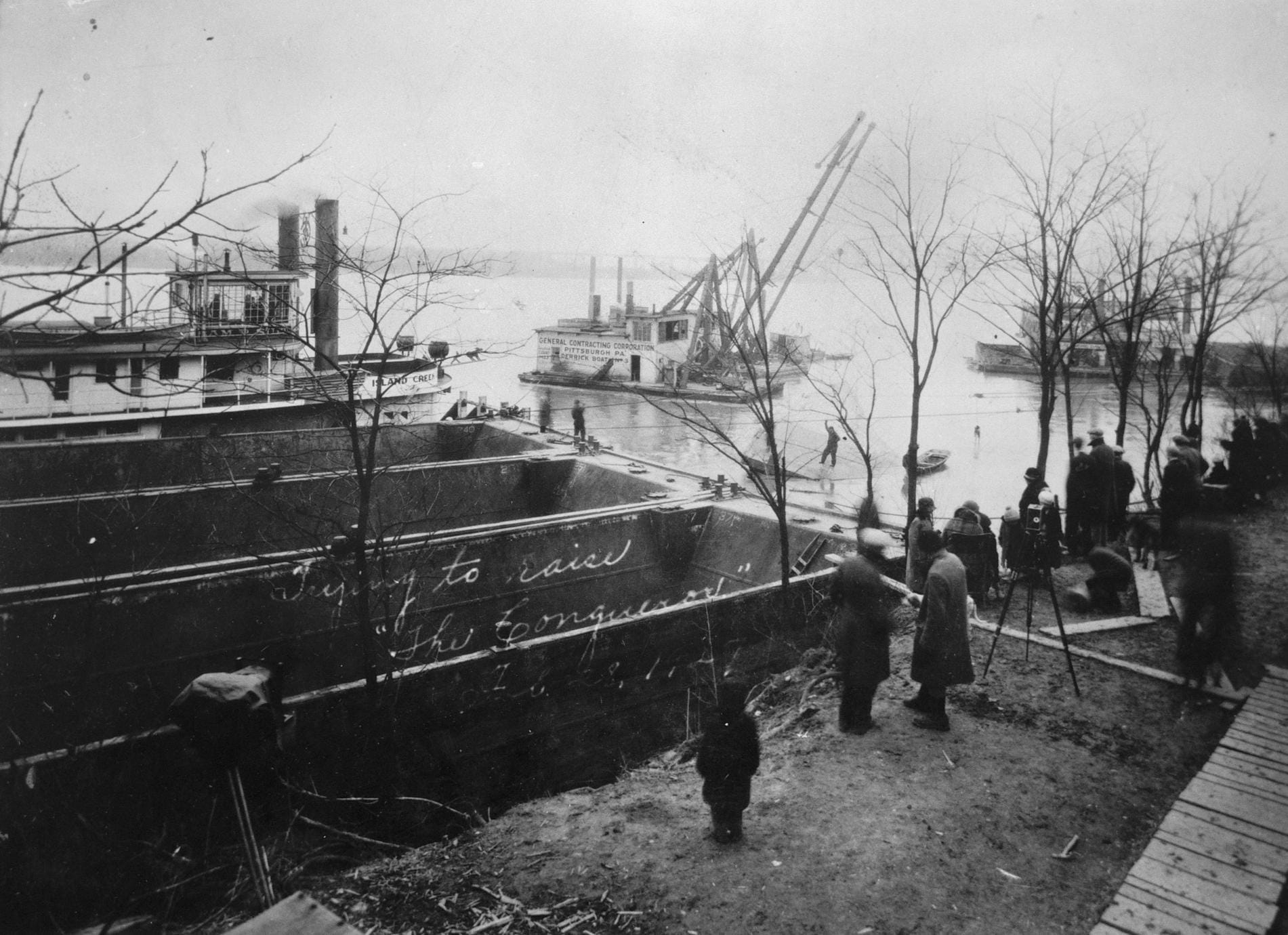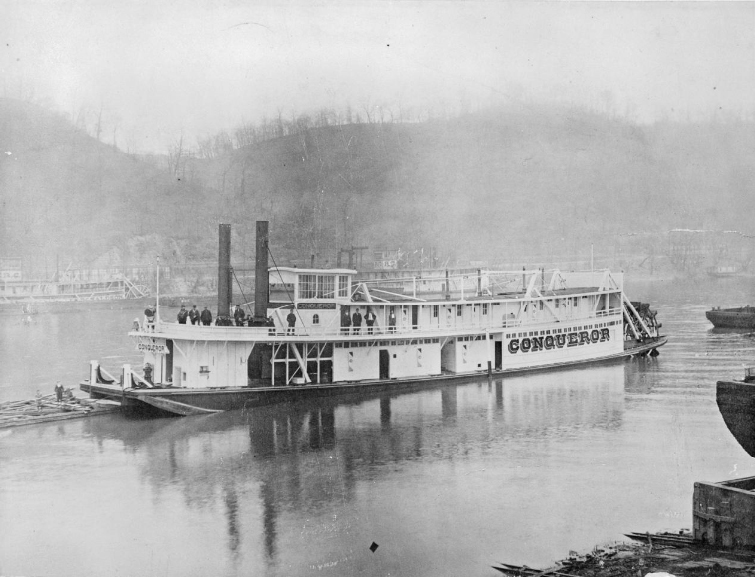Having “grown up” around towboats and rivermen, then working actively on the river for more than 50 years, this writer has heard of many superstitions and omens of “bad luck” for towboats. While skeptical of such things, it is hard to deny that the month of February was at least unfortunate for the subject of this column, the steamer Conqueror.
A group of Pittsburgh industrialists started the Pittsburgh Coal Company (PCC) in New Jersey in 1899. These men included Andrew Mellon, Henry Oliver and Henry Clay Frick. Though it was incorporated in New Jersey, the company operated only in the Pittsburgh area. In the beginning, the company had more than 80,000 acres of land on both sides of the Monongahela River and several small railroads. The Monongahela River Consolidated Coal and Coke Company (known as “River Coal” or the “Combine”) delivered coal for Pittsburgh Coal early on. By 1915, though, the Combine was waning in prominence, with many of its large (and in some cases very old) steam sternwheel towboats laid up in boneyards. Thus, it was merged into Pittsburgh Coal.
Pittsburgh Coal then utilized some of the Combine’s old boats and, in 1916, started a building program of its own. The first vessels were built at Elizabeth, Pa., and came to be known as the “alphabet boats.” The Active came out in 1916, followed by the Beacon in 1917. Later in 1917, the Conqueror made its debut.
The Conqueror had a wood hull that measured 136.6 feet by 26 feet. The sternwheel vessel was powered by compound engines that were 15’s, 38’s with a 6-foot stroke, rated at 430 hp.
According to Way’s Steam Towboat Directory, the Conqueror was a veritable museum of parts from former Combine boats, many having been the large fabled boats that previously ushered huge tows of wooden coalboats and barges laden with coal from Pittsburgh to New Orleans when the Combine dominated river traffic. The Conqueror was reputed to have had the cranks, shaft and wheel bearings from the Tom Dodsworth (built in 1871), the pitmans and brasses from the Boaz (built in 1882), crossheads from the Sam Brown (built in 1896), upper works on the high pressure cylinders from the Cadet (built in 1902), and the hogchains and turnbuckles from the Alice Brown (built in1871).
The Conqueror was built pool style with the pilothouse set forward of the upper cabin. It was a fixture in the Pittsburgh pools that it was designed for, towing coal out of the Monongahela River for the first several years after it was constructed. At some point prior to 1925, it was sold to Wheeling Steel Corporation, organized in 1920. Wheeling Steel had mills and plants in the Wheeling, W.Va., and Steubenville, Ohio, areas, as well as a mill at New Boston, Ohio.
The Conqueror was engaged in towing between Steubenville and New Boston in February of 1927. On the 25th of that month, it was near the Sciotoville Railroad Bridge, Ohio River Mile 348.9, almost in sight of the New Boston facility, when it was caught in a windstorm and capsized. The steamer Advance was struck by the same storm near Lock 27, some 47 miles up river, and was also upset that day.

The wreck of the Conqueror lay upside down in water said to be 50 feet deep. Salvors brought in divers, cranes, derricks and other equipment to use in the effort to raise the boat. A photo taken from the Ohio shore at the time depicts the Island Creek steamer Sam P. Suit landed downstream outside a tow of empty barges above two derricks working on the overturned hull. Lettering on one of the derricks proclaims “GENERAL CONTRACTING CORPORATION PITTSBURGH, PA DERRICK BOAT No. 3.” Two more steamboats can be seen below the wreck. Their names are illegible in the photo, but the one moored outboard has the Island Creek logo mounted between the smokestacks.
The salvage efforts continued for more than a week without success. The insurance company involved sold the still sunken wreck to Capt. Leo Birch McBride of Louisville, Ky., for a reported sum of $3,000.
The “rest of the story” will be told in next week’s Old Boat Column.
Featured image caption: The steamer Conqueror new at Elizabeth, Pa., in 1917. (From the author’s collection)




